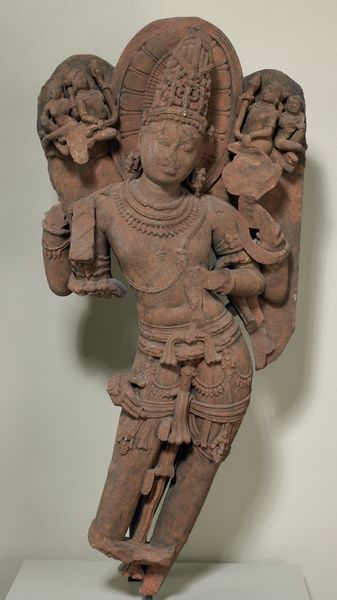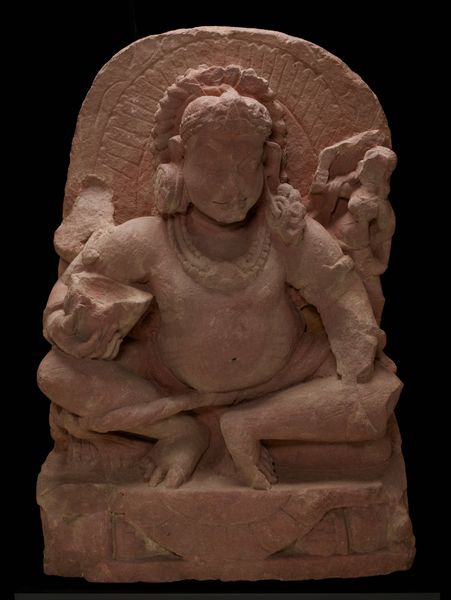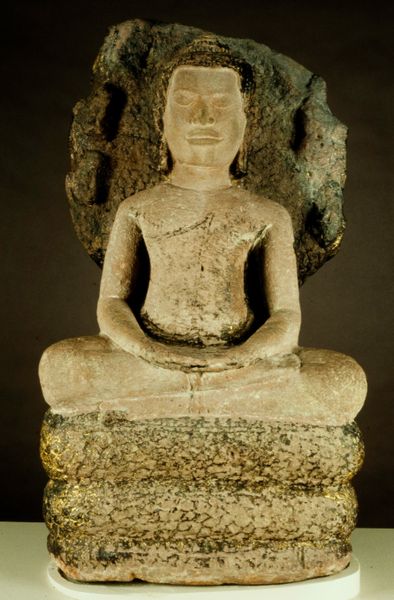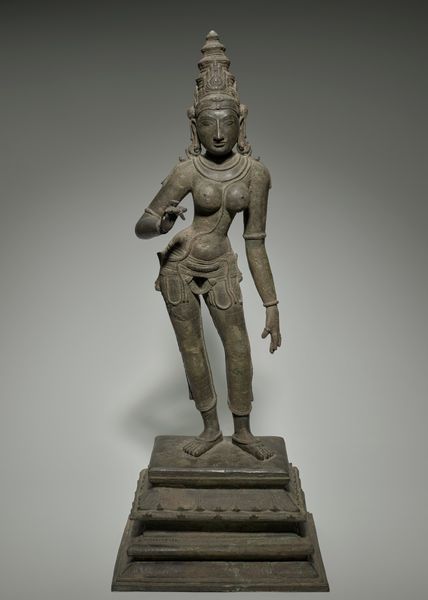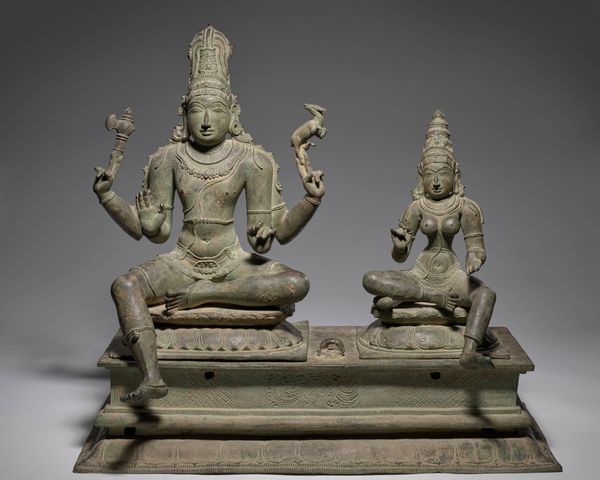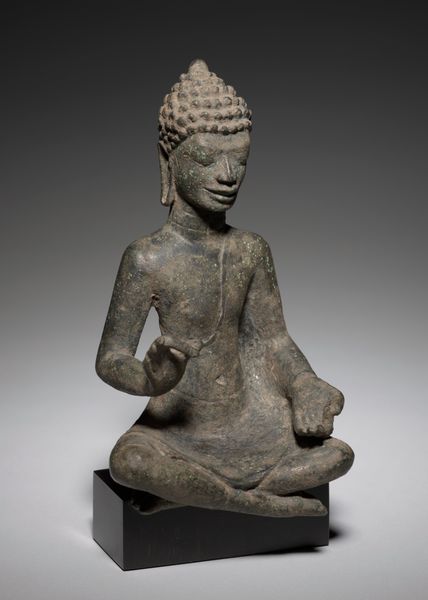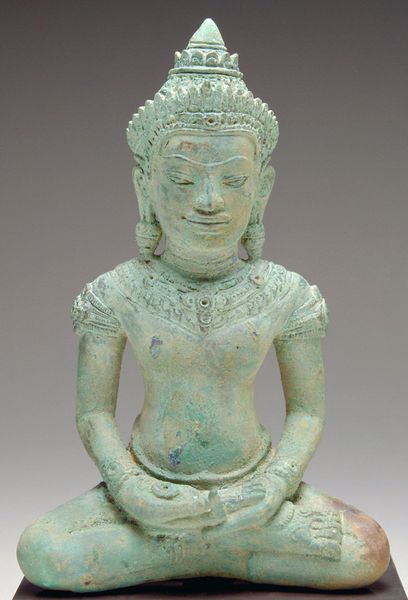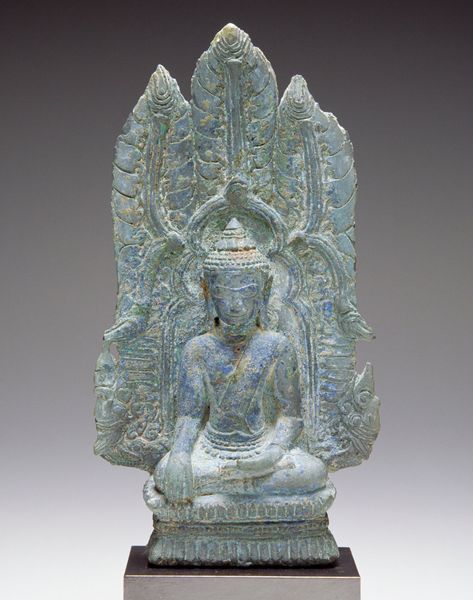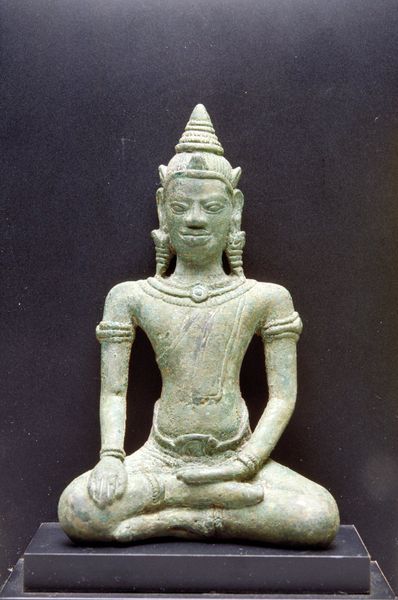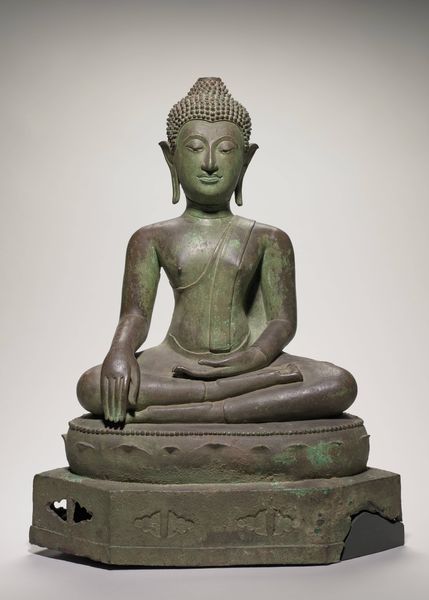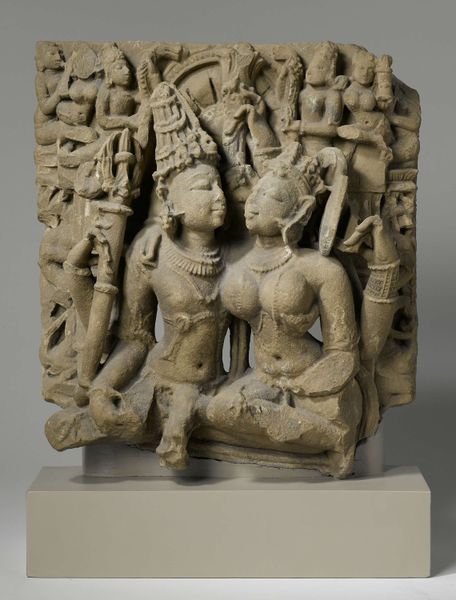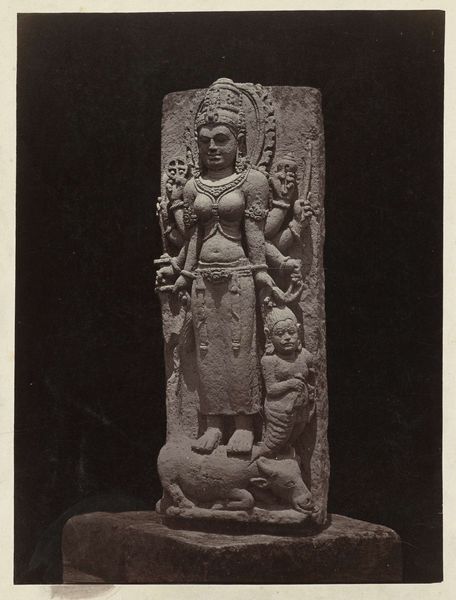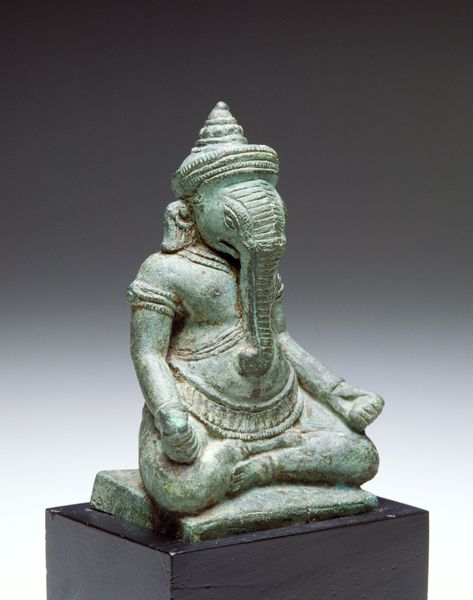
sculpture
#
stone
#
asian-art
#
figuration
#
ancient-mediterranean
#
sculpture
#
nude
Dimensions: 45 x 28 1/2 x 15 1/2 in. (114.3 x 72.39 x 39.37 cm)
Copyright: Public Domain
This sculpture of a Yogini with a Jar, of unknown date and authorship, is carved from stone. Its monochromatic palette accentuates the form and texture of the stone. The figure's smooth skin contrasts with the rougher, unfinished background, drawing our attention to her presence. The Yogini sits in a relaxed pose, holding a jar, her expression calm and serene. Her body is idealized yet grounded, a paradox that challenges our conventional notions of beauty and spirituality. The linear details of her jewelry and the contours of her body are executed with precision, yet the form is simplified. The composition, with its combination of smooth surfaces and rough textures, invites a sensory experience. This work is not merely a representation but an invitation to engage with the material reality of the sculpture, to understand how the artist manipulates form and texture to evoke meaning. It reminds us that art is always in dialogue with its materials and the cultural contexts in which it exists.
Comments
minneapolisinstituteofart about 2 years ago
⋮
Throughout the subcontinent and within its many indigenous faiths, the goddess, or devi, is worshiped as a manifestation of life-giving female energy. Here, a goddess known as a yogini gracefully demonstrates full control of breath and body. Her hands hold a jar, possibly containing medicine, and a wand, suggesting her curative capabilities. Her now-broken bottom left limb would have held a skull cup for drinking liquor or blood, signaling her ferocity. She is also believed to possess powers of flight, to which the faintly etched bird beneath her right foot might allude. This sculpture was once enshrined in a circular open-air temple, with at least 15 other yoginis, each believed to possess magical powers. Together they would have formed a sacred space and potential site for tantric, or esoteric, Hindu (Brahmanical) rituals in which a devotee sought union with the divine.
Join the conversation
Join millions of artists and users on Artera today and experience the ultimate creative platform.
